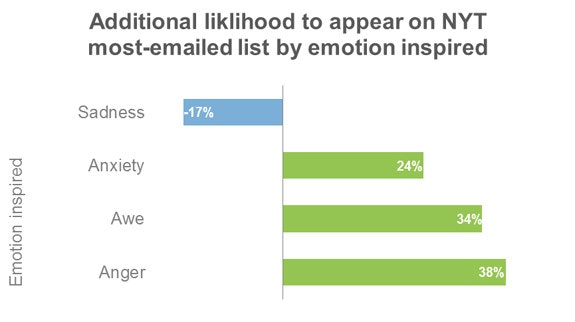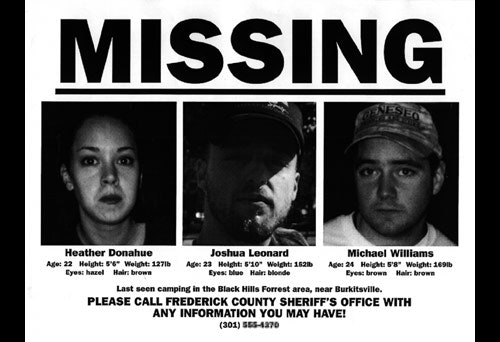In defining viral marketing, many creative descriptions have been put forward.
At its core, viral marketing is simply the “spread of an idea” that helps market your business or cause. It’s putting material out there that by its very nature attracts attention and discussion.
Perhaps the most objective way to look at the practice of viral marketing is to examine the research of some highly intelligent folks who have dedicated years to deciphering the common elements of viral content.
Below, I’ll dissect some of my favorite research from an associate professor at the Wharton School of Business, as well as examine some classic viral marketing examples to see what lessons can be had from campaigns that managed to spread far and wide.
Best Practices in Viral Marketing?
As much as many marketers try to tackle this topic sans-question mark, I’m here to tell you that there really is no way to make something go viral.
That said, Wharton professor Jonah Berger has made the best attempt to date in researching and defining what characteristics are often found in a viral piece of content.
This began with his now famous joint paper with Katherine Milkman called What Makes Online Content Go Viral?, where Milkman and Berger found that (written) online content often went viral when:
It was positive, dwelling on positive issues or topics. It evoked a strong emotional reaction (joy, fear, anger). It was practically useful.
Later, Berger would take a full-scale look at the nature of virality and viral marketing in his book Contagious: Why Things Catch On. In his book, Berger outlines the more comprehensive STEPPS system which serves to examine common elements in viral pieces of content:
Social Currency
People enjoy sharing things that compliment them, either by making them look “in the know” or by showcasing their good taste or opinion on something. As an example, I’ve regularly found that customer service stories are the most viral types of customer service content, because sharing a list of great stories makes you look good!
Triggers
Reading Berger’s book, you’ll be surprised to hear about how often very common brands are talked about (people talk about Cheerios more than Disney World? Who would’ve thought!). That’s because some topics/brands/products have more common triggers. Many viral pieces of content rely on this; remember how popular the Budweiser “Waaassssuuuuuuup?!” commercials were? That’s because they could be used as a greeting, a very common trigger.
Emotion
“When we care, we share,” or in other words, as Berger’s findings from his earlier paper show, people tend to share content that evokes a strong emotional reaction. Surprisingly (as depressing as the news often seems), the most viral pieces of online content didn’t focus on low-energy emotions like “sadness,” as marketer Carson Ward points out here:

These findings are (almost) exactly mirrored by more recent research from Kelsey Libert and Kristin Tynski, published on the Harvard Business Review, which echoes the fact that high-energy emotions are what truly stir discussion.

Public
In essence, social proof. People need to see others doing something in order to easily embrace it. As psychologist Robert Cialdini revealed in this book Influence, sometimes people “fake it before they make it” to achieve this, such as mega-churches putting in money before they pass the donation plate around (people see the bills placed in and base their own donation on what is there).
Practical Value
Great news for content marketers, practically useful material was shown to be highly viral. People like sharing “news you can use” because they want to help others and look good for doing so.
Stories
In the world of marketing, transportation leads to persuasion, because it’s so easy for us to get wrapped up in a good tale. If you’ll recall the viral attention that the Red Paperclip story received, it was all because people simply had to know what happened next in the tale.
The “why” of a viral success story is not so easily explained through this sort of examination, however.
Another great way to learn about the practice of viral marketing is to look closely at successful campaigns that have been run in the past. Below, I’ll show you some of my favorite examples of viral marketing, hopefully providing some inspiration along the way.
Viral Marketing Examples
The general public most often associates a “viral” piece of content with a hilarious YouTube video, such as Gangnam Style. While videos certainly are a big subset of viral content, many more mediums and methods apply.
1. Guerilla tactics
One of my favorite examples of a company going “guerilla” and creating a story worth talking about is WePay, and their stunt of leaving a 600-pound block of ice in front of a PayPal conference.
WePay’s execution here was brilliant: for years, people had been complaining about how PayPal would “freeze” their accounts, locking them out from withdrawing the money they earned. If you sell goods online, your PayPal account could be a big part of your livelihood, so to be locked out and ignored was obviously enraging for many people.
No surprise, then, that WePay’s jab at PayPal’s willingness to freeze your money was so well received! Press around the story was whirling, starting with coverage on TechCrunch:

Since some of the biggest points of difference that WePay offered were dependability, security, and customer service that PayPal has often been accused of lacking, taking a jab at their competitor with this stunt wasn’t just for random, pointless press; it got people talking about a problem WePay truly hoped to address.
2. Baking growth into the product
Helping the product market itself has often been described as growth hacking (a more modern term), but the spread of awareness in this next example also serves as a fine showcase of virality.
The candle company Diamond Candles actually bases its entire unique selling proposition around the tactic they use to get people to talk about their products. Since the founders knew that 98% of home fragrance purchases are made by women, they decided to execute an unusual strategy to get women to talk about the product.
In every Diamond Candle, a ring is included. The founders made sure that these rings weren’t cheesy and that the “reveal” (packaging) was creative and exciting, and they added one final touch: once in a while, a real diamond ring (worth up to $5,000) is included in a candle!

The founders knew that discussion around the rings would be high (jewelry is naturally seen and discussed), but adding in this outrageous potential for a real diamond ring was enough to tip the scales and turned the campaign into a big win for the ecommerce company, helping them achieve $1 million in revenue in 12 months.
3. Easter eggs and the “experience”
Viral marketing for horror movies seems to be a very common thing these days. The marketing team for the re-imagining of Carrie created a “telekinetic coffee shop scenario,” where an angry women in a coffee shop was made to look like she had the powers of telekinesis:
It was a smashing success with 47,000,000+ views, and was a really great example of creating an experience that people would remember and tell others about (as well as share online).
These sorts of tactics might need to pay homage to one of the originators, however, in the brilliant marketing used to promote The Blair Witch Project. The success of the indie film is largely owed to how the campaigns were so focused on making the experience so “real” to the viewer.
The website kicked things off with strange video releases that hinted at the horror that was to come in the full version (warning: still pretty creepy to this day). The team also released items like fake “Missing” flyers of the characters in the movie:

Top it all off with some mythology (with video and sound clips) and you have a very early example of marketers giving their audience an engrossing experience that was worth talking about.
Another example that shows the power of “Easter eggs” (hidden surprises) in marketing is the viral campaign used to promote Halo 2, the video game for Xbox. Hold on to your seats, because this is a weird one.
In the promo trailer for the game, a strange website called ILoveBees.com was shown, with no mention of what it was. The players who noticed this Easter egg were soon taken on a very strange ride:
I Love Bees was an alternate reality game (ARG) that served as both a real-world experience and viral marketing campaign for the release of Halo2… players who investigated the titular website discovered that the pages appeared to be hacked by a mysterious intelligence. As players solved puzzles, audio logs were posted to the ilovebees.com site, which gradually revealed more of the fictional back-story, involving a marooned artificial intelligence stranded on Earth and its attempts to put itself back together.
Pretty absurd for the average Joe, but remember that this campaign was made to promote a science-fiction space shooter with a character who depended on an A.I. companion.
In short, whatever you may think of it, it appealed to the target audience of the game and turned into a massive success with millions of people hitting the site over the course of its history.
4. Viral series
How the heck do you get people to talk about boring ol' blenders? That’s the question Blendtec found itself asking when it wanted to promote its new product line. It’s tough for a blender to have “social currency,” so what could be done?
The brilliant answer was found in the series called Will It Blend?, a video collection of Blendtec blenders destroying (or not destroying) popular items that definitely should not be in a blender.
The genius of this series was not only in how it made blenders a discussion topic (seriously, kudos), but in how the videos showcased just how rugged Blendtec blenders really were.
The showmanship may have been great, but these videos were also moving products. If a blender can spit up and chew out an airsoft pistol, it can most certainly handle any fruits and vegetables that you’ll throw at it.
5. Interactivity
Whenever people can engage with something, it definitely makes the experience more memorable. That it turn increases the likelihood that it will be discussed with others.
In what is probably my favorite example on this list—because it’s just so dang “out there”—Burger King took this interaction strategy to a whole new level when they created the Subservient Chicken website.
Offering proof that you really can “have it your way,” the Subservient Chicken domain offered users the ability to give commands to a guy dressed up in a chicken suit…and yes, you did read that correctly.
This interactive marketing has seen a resurgence on the web, with another notable example being Cleverbot, which is a bot that chats back to users as if they were in a chat room with a real person.
6. The classic viral video
You knew this would be here! With the advent of free video hosting on YouTube, a viral video is often seen as the de facto example of viral marketing.
Marketing videos are almost always creative advertisements. Below, I’ll highlight some of the better viral video ads out there.
The Dollar Shave Club advert is a modern classic that you may have come across before. It simply shows the founder walking through the process of what Dollar Shave Club is about, but with unapologetic bravado and humor:
This next example is actually the very first video on YouTube to ever hit 1,000,000+ views! A 2006 Nike campaign was looking to promote the release of the Tiempo Legend, a shoe worn by soccer legend Ronaldinho. To the disappointment of many viewers not used to viral marketing, the video is faked, but it’s an amazing example all the same:
Another fantastic example that doesn’t rely on humor or video manipulation trickery is the GoPro viral video which showcases a fireman saving a kitten, all recorded using a GoPro camera.
Not only is the video itself heartwarming, but it really shows how well the GoPro camera can capture memorable moments:
7. Viral articles
Writers can stop sweating, as I and many others will assure you that despite the many interactive examples above, the writer still runs this show.
Although I showed you the characteristics that Berger found in highly viral articles, I’d like to point to another one of his studies entitled When, Why, and How Controversy Causes Conversation. According to Berger, the secret to creating controversial content is to focus on items of “low-controversy”—or debates that hinge on issues that won’t hurt any feelings.
Why might that be? According to the study:
Data shows that controversy increases likelihood of discussion at low levels, but beyond a moderate level of controversy, additional controversy actually decreases likelihood of discussion.
I like to call this “water-cooler appropriate content;” people don’t like discussing things that aren’t water-cooler appropriate because it might make them look bad or bring down the mood of the group.
This is why topics like toilet paper orientation or “cats vs. dogs” seem to stir up such a huge debate. These things are easy to argue about, the sides are split pretty evenly, and most importantly, it’s hard for anyone to get their feelings hurt. In a fairly recent podcast, Derek Halpern highlights this image on Facebook as one example that shows how people simply love to argue about trivial stuff:

An example found on the Help Scout blog is our article on Why Steve Jobs Never Listened to His Customers. The debate was between “internal innovation vs. customer feedback,” with the added twist of being wrapped around the words of a very famous man.
I couldn’t make the article go viral, but the stage was set for debate, and it turned into one of the most popular pieces during the early stages of our company blog (a time when we needed it most!).



